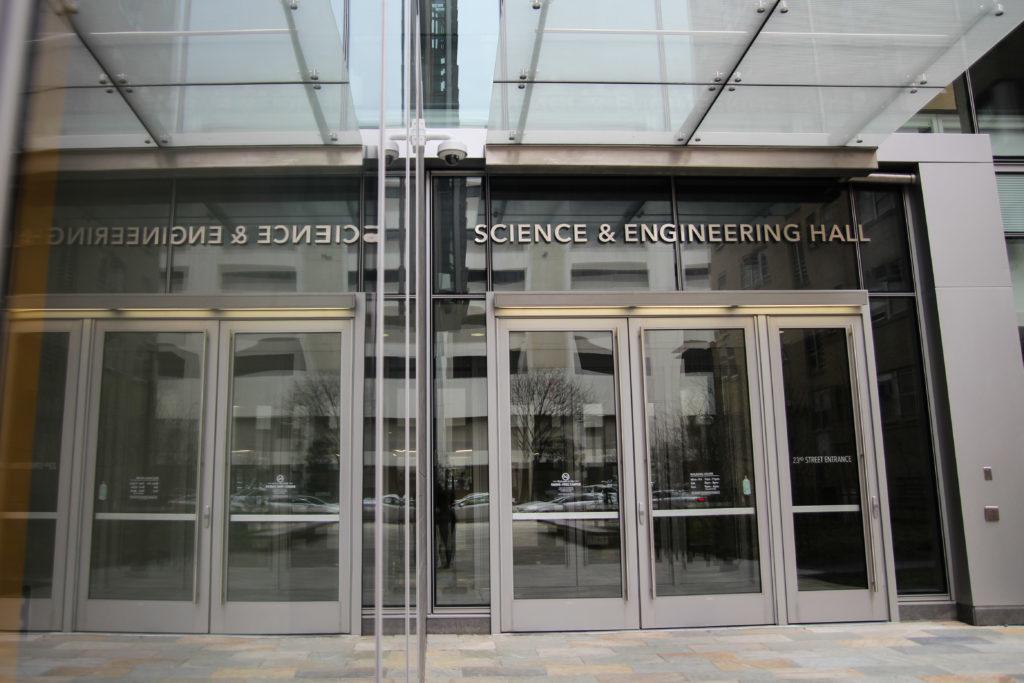Updated: May 28, 2017 at 3:23 p.m.
A contracted worker is suing the University for more than $2 million claiming the actions of a GW employee or agent caused him to be shocked with about 30,000 volts of electricity while working in the Science and Engineering Hall.
Rene Villanueva is suing the University for negligence and strict liability for the incident, according to the complaint filed in D.C. Superior Court last week. He claims in court documents that the incident caused severe burns, mental anguish and loss of wages after University workers or contracted agents allegedly did not check if anyone was working on the electric switchgear that Villanueva was assigned to fix before allowing electricity to flow through it.
“Plaintiff has suffered and will continue to suffer much physical pain and mental anguish; permanent disability which will substantially affect his ability to engage in daily activities,” the complaint states.
Villanueva could not be reached for comment. His attorney Justin Beall did not return requests for comment.
University spokeswoman Maralee Csellar declined to comment on the suit or state if the University still contracts Villanueva, citing a University policy to not comment on pending litigation.
In May of 2014, Villanueva, who worked for John E. Kelly & Sons, Electrical Construction, Inc., was working at GW as a high voltage subcontractor in SEH as GW prepared for its opening in January 2015, according to the complaint.
At least nine switchgears that regulate the electricity flowing to buildings were set in manual mode, meaning a worker had to turn a switch to allow the electricity to circulate to the buildings. The switchgear in SEH received power from a separate switchgear in Ross Hall, according to the complaint.
Villanueva was assigned to switch out the nuts and bolts in the SEH switchgear, which were installed incorrectly, according to a complaint from a previous suit that Villanueva filed. To prevent injury during his work, the electricity in the Ross Hall switchgear needed to be turned off.
About May 20, Villanueva was working in SEH, but because there was a power outage in the area, the switchgear was already de-energized to prevent a power surge when electricity was restored, the complaint states.
Power was soon restored and a GW employee or agent allowed electricity to once again flow through the Ross Hall switchgear without checking to see if anyone was working in SEH, according to the complaint.
Villanueva claims that when power was restored to the Ross Hall switchgear, electricity flowed to the SEH switchgear that he was repairing and he was blasted with roughly 30,000 volts of electricity causing severe burns to his arms, legs and upper body.
Villanueva was taken to GW Hospital to be treated for “serious and permanent injuries,” according to the complaint.
Villanueva charges that GW was negligent because the University did not check if a person was working on the switchboard before re-energizing the switchgear, did not warn of a dangerous workplace situation, failed to remedy a dangerous situation, did not safely activate the switchgear and did not leave the switchgear in a safe working state.
“As a direct and proximate result of the negligence of the Defendant GWU in failing to first check for individuals working on the switchgear system prior to energizing the switchgear in GWU Ross Hall, Plaintiff suffered severe and permanent physical injuries,” the complaint states.
Villanueva is asking for more than $2 million in damages and a judgement that GW is liable for the incident.
A scheduling hearing for the parties is planned for Aug. 18, according to court documents.
Villanueva filed a separate suit against Truland Systems, Mona Electric Group, Inc., Clark Construction Group, LLC and PEPCO in November. The suit claimed Truland Systems Corporation, Mona Electric, Clark Construction had been negligent, while PEPCO was strictly liable for the incident and Villanueva’s injuries.
Truland Systems installed the Ross Hall switchgear six months before the incident, while PEPCO provided the electricity to the switchgear. Mona Electric was the primary electrical contractor and Clark Construction was the general contractor for SEH, according to the complaint from the November lawsuit.
Villanueva sought at least $2 million from each company, according to the complaint.
Representatives from both Clark Construction and PEPCO declined to comment citing active litigation.
A status hearing for that suit is set for June 16.
This post was updated to reflect the following correction:
The Hatchet incorrectly reported that the incident was an electrocution. An electrocution refers to a fatal incident. The circumstances described in court documents refer to an electrical shock. We regret this error.





